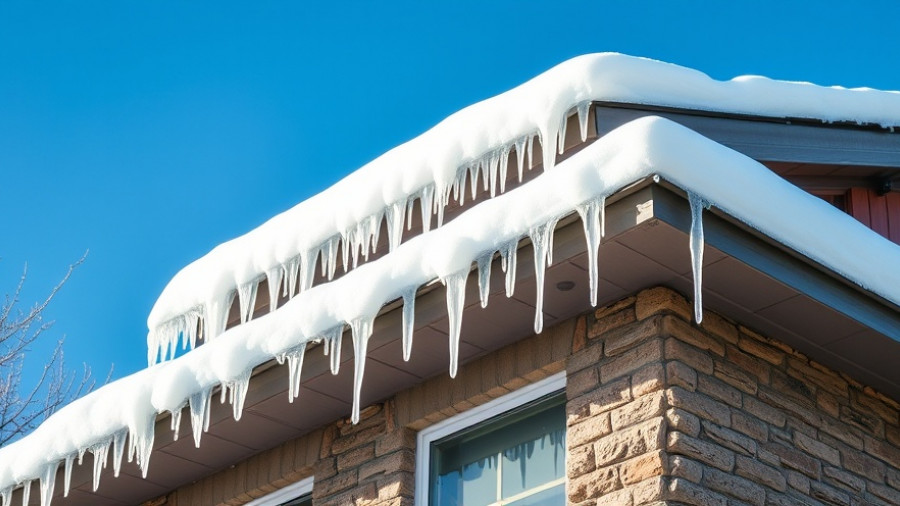
Understanding Ice Dams: The Sneaky Threat to Your Home
Living in areas with harsh winters means dealing with specific weather-related risks, and one such risk is the infamous ice dam. An ice dam forms when snow melts on a heated roof, moves down, and refreezes at the colder edges. This process can lead to severe water damage inside your home as the trapped water backs up and seeps through cracks and openings. Understanding how these phenomena occur and how to manage them is essential, especially for South Carolinians who may travel to colder climates or own property up north.
Ice Dams and Your Homeowners Insurance: What You Need to Know
Many homeowners are left wondering: are ice dams covered by their homeowners insurance? The answer is not always straightforward. Generally, most standard homeowners insurance policies cover damage resulting from ice dams, such as leaks into the roof and walls. However, it's crucial to review your specific policy, as some damages like the removal of the ice dam itself may not be included.
This consideration is especially important for those with properties in risk areas. According to a Guidewire HazardHub study, almost one-third of U.S. homes could be at risk of ice dams due to prolonged freezing conditions. Be proactive in understanding what your policy entails regarding such damages and ensure your coverage is adequate.
Practical Tips for Preventing Ice Dams
Preventing ice dams is always more manageable and cost-effective than dealing with resulting damages. Here are some tips that can help reduce the formation of ice dams:
- Insulate Your Home: Ensuring your roof and attic are well-insulated will reduce heat escaping from your home and melting the snow on your roof.
- Seal Air Leaks: A thorough inspection for air leaks around vents and fixtures can significantly impact how heat escapes into the attic, thus helping control roof temperatures.
- Regular Snow Removal: If snow accumulates on your roof, use a roof rake to carefully remove it while avoiding any potential damage to your shingles.
- Hire Professionals: If ice dams become problematic, enlisting the help of professionals ensures safe and effective removal methods without damaging your roof.
Steps to Take If You Experience Damage
Should you find yourself facing damage from an ice dam, timing and documentation are key. Follow these steps to navigate the insurance claims process effectively:
- Document the Damage: Take detailed photos of the affected areas as soon as it is safe to do so.
- Contact Your Insurance Provider: Quickly inform your insurance company about the damage and provide your documentation.
- Get Repair Estimates: Obtain a quote from a contractor to understand repair costs, which can aid in settling your claim more efficiently.
- File Your Claim: Your insurance agent will guide you through the submission process. Be prepared to discuss the extent of the damage and the mitigation steps that you took.
Emotional Impact of Ice Dams and Claims
For property owners, dealing with ice dams can be an emotional roller-coaster. The damage they can inflict not only threatens physical structures but can also lead to delays and frustrations during the insurance claim process. Understanding potential pitfalls, such as claim denial due to perceived negligence, can help empower you to take precautionary steps and feel more in control of your home’s safety.
Conclusion: Be Prepared and Stay Informed
Ice dams are a prevalent risk in the winter months, but being prepared and informed can significantly mitigate their impact. Ensuring that you review and comprehend your homeowners insurance policy can save you from unexpected out-of-pocket expenses and damage to your home. For South Carolinians traveling or owning property in affected areas, staying proactive about prevention and understanding the claims process can make all the difference when winter weather strikes.
For a better grasp of your insurance options and ensuring you navigate claims effectively, don’t hesitate to reach out for assistance with your policy.
 Add Row
Add Row  Add
Add 




Write A Comment